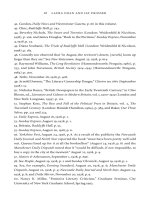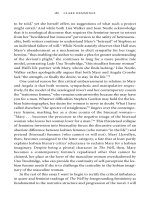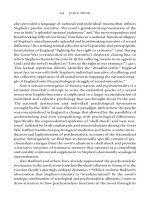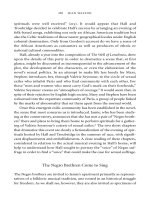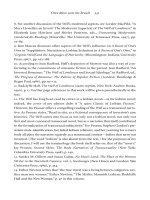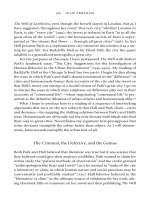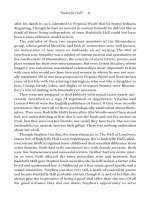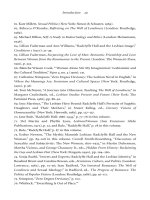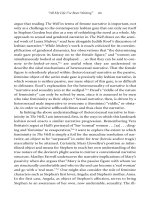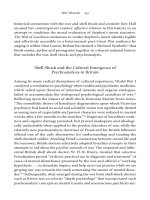Palatable poison 195
Bạn đang xem bản rút gọn của tài liệu. Xem và tải ngay bản đầy đủ của tài liệu tại đây (36.91 KB, 1 trang )
180
clare hemmings
to be told,” yet she herself offers no suggestions of what such a project
might entail.5 And while both Lisa Walker and Joan Nestle acknowledge
that it is sexological discourse that requires the feminine invert to retreat
from her “bewildered but innocent” perversion to the safety of heterosexuality, both writers continue to understand Mary’s “betrayal” of Stephen as
an individual failure of will.6 While Nestle astutely observes that Hall uses
Mary’s abandonment as a mechanism to elicit sympathy for her tragic
heroine, “thus enabling the author to make a plea for greater understanding
of the deviant’s plight,” she continues to long for a more positive role
model, contrasting Lady Una Troubridge, “this steadfast femme woman”
and Hall’s life partner with Mary, whom she finds lacking.7 Like Nestle,
Walker rather apologetically argues that both Mary and Angela Crossby
lack “the strength, or finally the desire, to stay ‘in the life.’”8
One central reason for this critical embarrassment in relation to Mary
and Angela is that both women, sympathetic and manipulative respectively, fit the model of the sexological invert and her contemporary cousin
the “traitorous femme,” who remains untrustworthy because she may leave
you for a man. Whatever difficulties Stephen Gordon may hold for the lesbian historiographer, her desire for women is never in doubt. What I have
called elsewhere “the spectre of straightness”9 lingers over the contemporary femme, marking her as a close cousin of the bisexual woman—
“Mary . . . becomes the precursor to the negative image of the bisexual
woman who leaves her woman lover for a man.”10 This threatened collapse
of feminine inversion into bisexuality forces the discursive creation of an
absolute difference between lesbian femmes (who remain “in the life”) and
pretend (bisexual) femmes (who cannot or will not). Mary Llewellyn,
then, becomes consigned to the latter category, a fate that at least partly
explains lesbian literary critics’ reluctance to reclaim Mary for a lesbian
imaginary. Despite being a pivotal character in The Well, then, Mary
becomes a contemporary femme’s repudiated other that cannot be
claimed, her place as the lover of the masculine woman overshadowed by
Una Troubridge, who can provide the continuity of self-perception the lesbian femme needs if she is to challenge the centrality in the lesbian imaginary of the masculine woman.
In the rest of this essay I want to begin to rectify the critical imbalance
in queer and feminist readings of The Well by foregrounding femininity as
fundamental to the narrative structure and progression of the novel. I will
